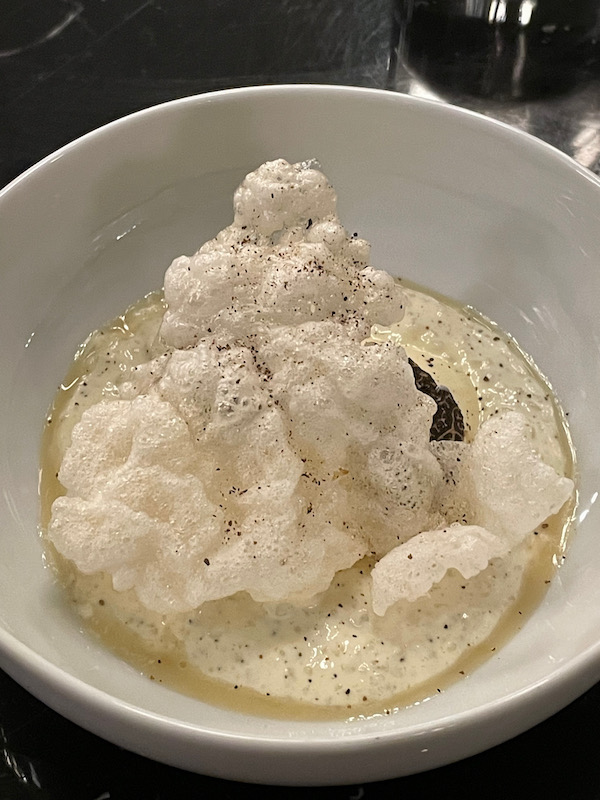Our Blog - Paris 2022 Day 2
One of our last trips to New York City, we took a stroll along the High Line, the elevated urban railroad bed converted to a linear park. However, it wasn't the first one, and it the planning director for the High Line had said that the model for it was La Promenade Plantée (sometimes called the Coulée Verte) in Paris ... or the Paris High Line. The Promenade runs for almost 3 miles on the East side of the city. It is built on the former right-of-way of the Vincennes railway line, which linked the Bastille station to Verneuil-l'Étang beginning in 1859, passing through Vincennes. When operations were stopped in 1969, part of it was integrated into the regional commuter railway (the RER) and the rest was completely abandoned. When the area was renovated, the promenade was created and opened in 1993. A bit of trivia: if you have seen the movie "Before Sunset" with Ethan Hawke and Julie Delpy, the Coulée Verte was one of the filming locations.
As we started along the route, we thought this was just a really interesting picture ... the buildings look to have been sawed in half to make room for the pathway.



We were up high enough that we got a really good look at some of the statues that are at the tops of some of the buildings, these being probably the most interesting!
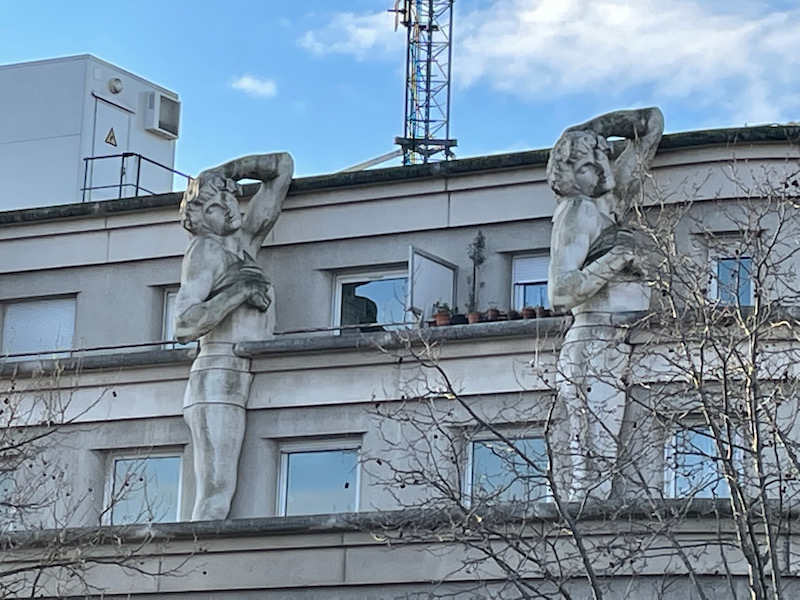
Then we headed over towards the Jardin du Port de l'Arsenal and the bottom part of the Canal Saint Martin. From the bridge, you can see the July Column that sits in the middle of the Place de la Bastille.
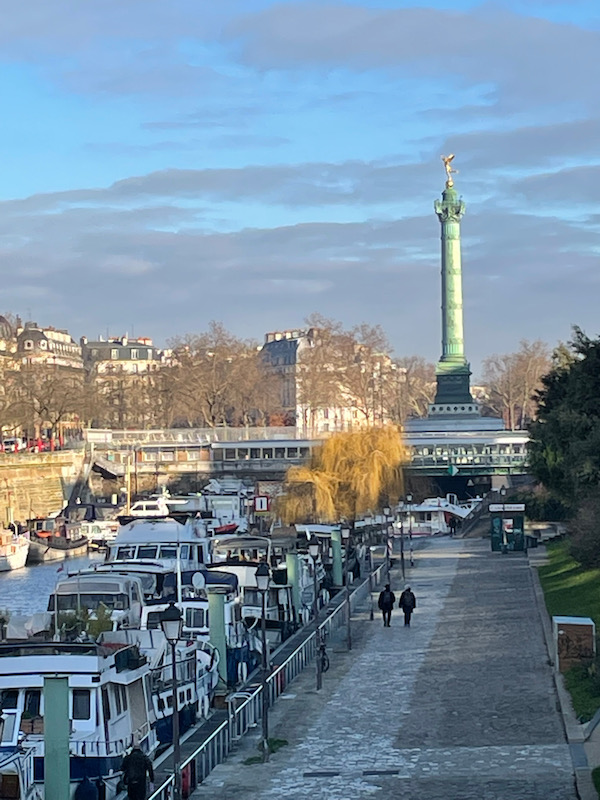
Most people know that Paris has had several different walls. The first major wall was created by Phillipe Auguste in the 13th century. But with the growth of the city, a new wall was built by Charles V from 1356 to 1383. This section of the wall at the Canal would have been the end of the Eastern part of the wall and was discovered in 2015.
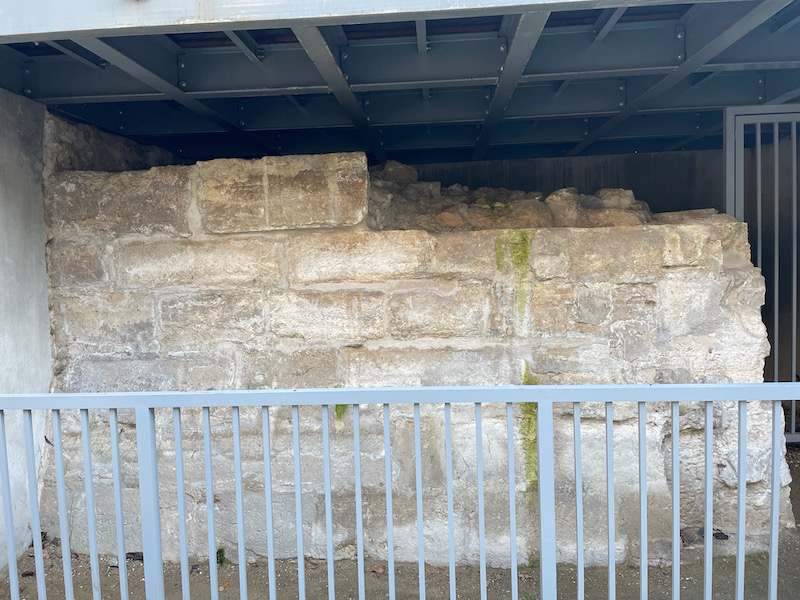
The Pavillon de l'Arsenal was built in 1878-1879 for Laurent-Louis Borniche, a wood merchant and amateur painter. It is located near the former site of a Celestine monastic community that was later turned into an arsenal. It is now a museum dedicated to Paris architecture and urbanism. Perhaps the next trip, we will have this on the agenda, since the permanent exhibit, which displays Parisian architecture and shows how the city has evolved, sounds interesting.
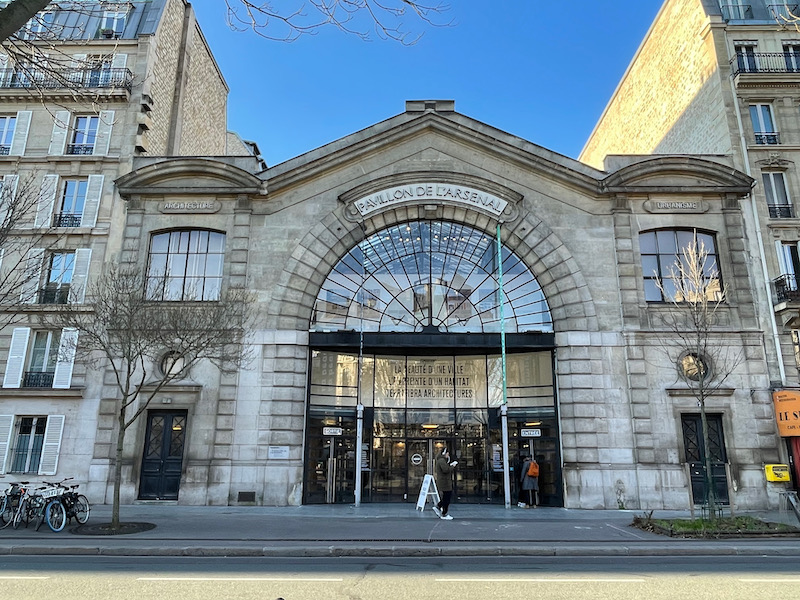
This neighborhood has the name "Arsenal" because it has been the home of the "King's Arsenal" or "Grand Arsenal" since 1533. This building is called the Célestins Barracks and is the headquarters of the Republican Guard. After the Célestin order was dissolved in 1779, various military units took up residence in the buildings.

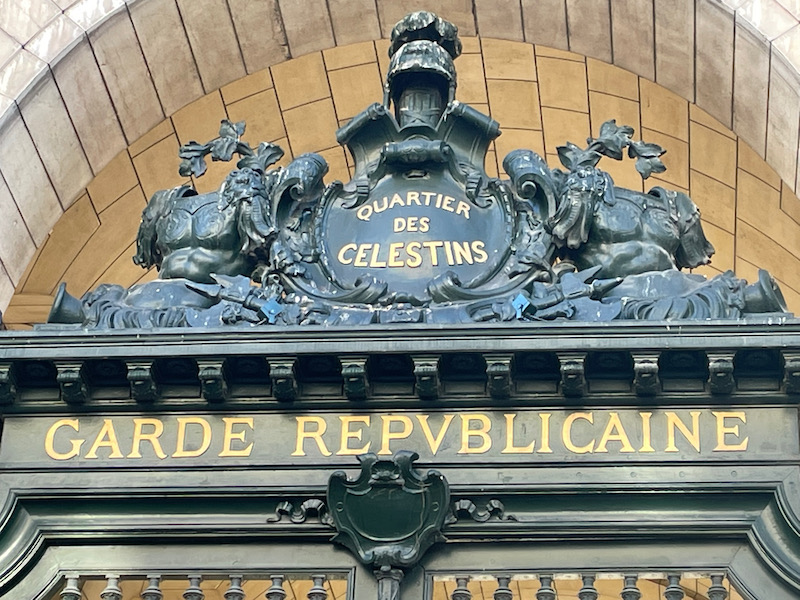
We went by the Place de la Bastille, with the July Column (that we saw earlier from a distance) and the new Opera Bastille in the background. It was created in 1989 and became the main facility of the Paris National Opera, alongside the older (and much nicer looking) Palais Garnier. Most opera performances are shown at the Bastille along with some ballet performances and symphony concerts, while Palais Garnier presents a mix of opera and ballet performances.

The Hôtel de Sully is a Louis XIIIth-style hôtel particulier, or private mansion. It was built in 1624 and the location was chosen due to the proximity of the Place Royale (Place de Vosges) and the Marais area, which was a fashionable area for nobility. It was then purchased in 1634 by the Duke of Sully, and continues to keep the name of this family. We walked through the center and the gardens, heading out towards the Palais Royale. The last picture shows what looks to be an old frame of a stained glass window, maybe from a church nearby. Don't know, but I thought it was interesting.
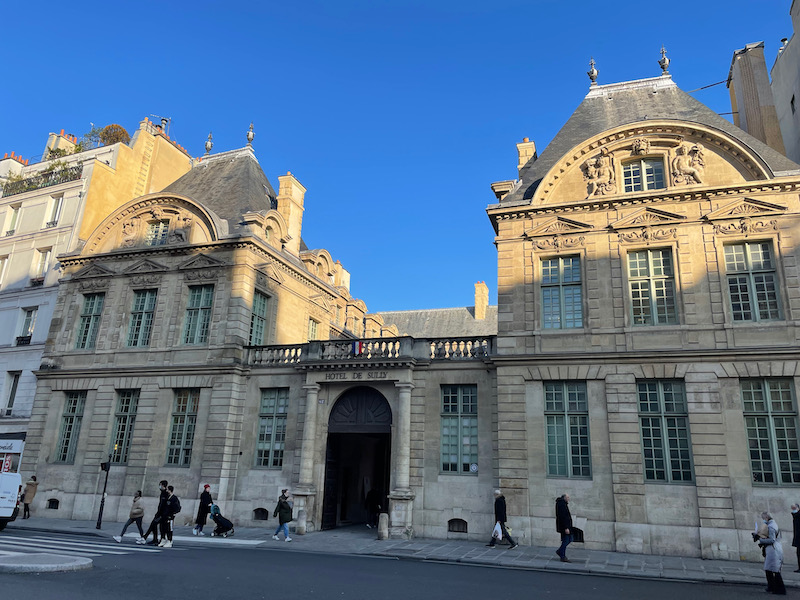
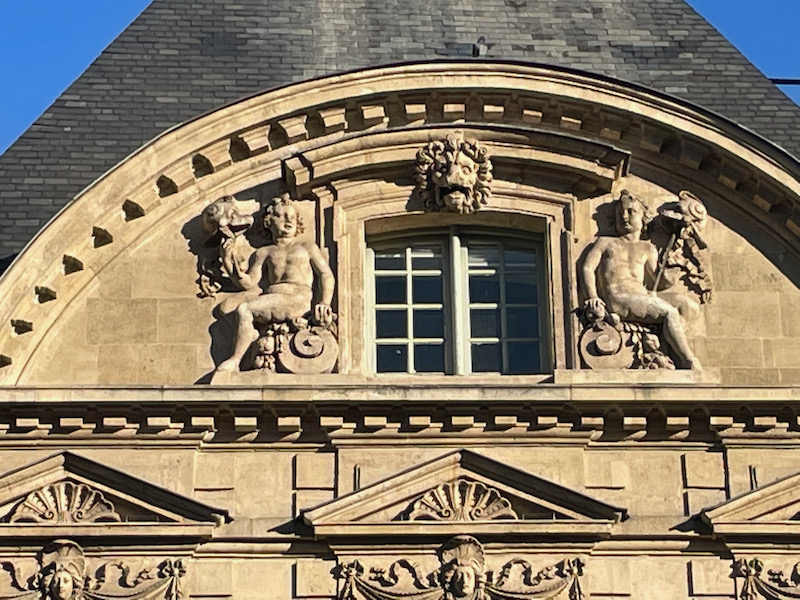
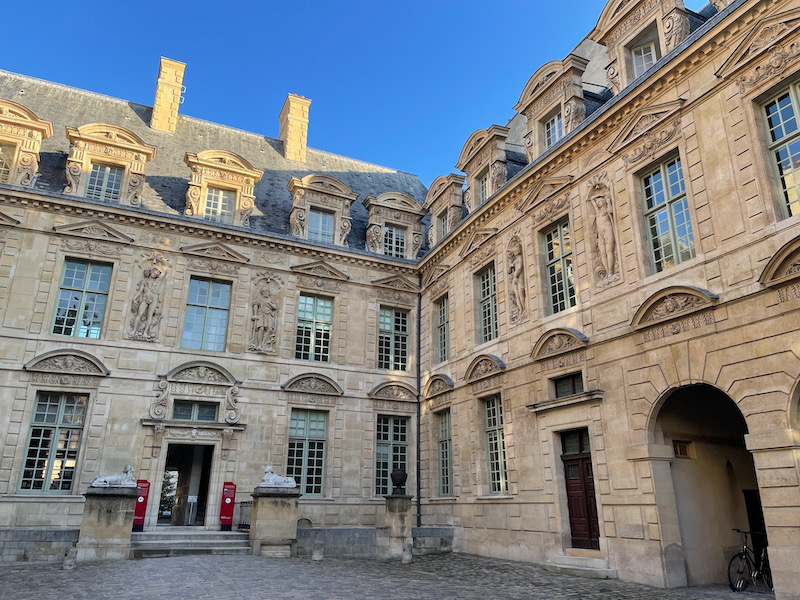

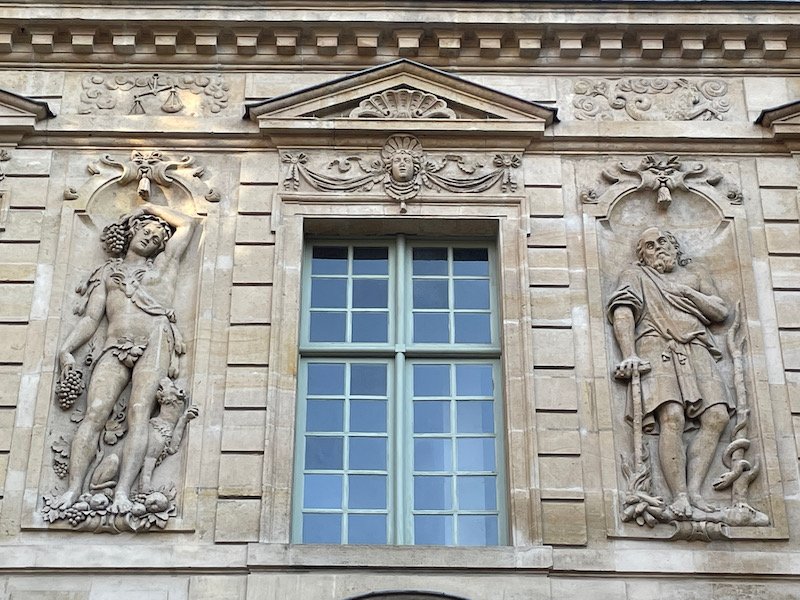

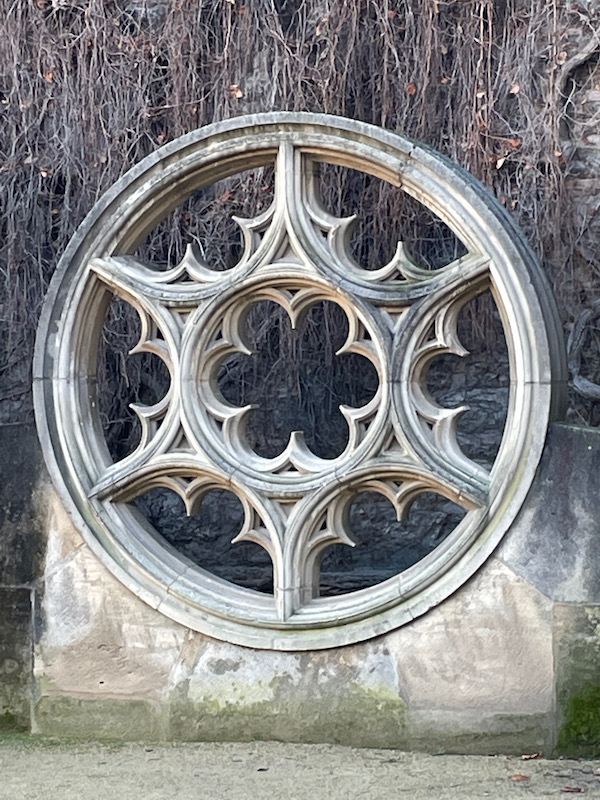
This is the Tour Saint-Jacques, which was built between 1509 and 1523. The flamboyant-Gothis tour is the only remaining vestige of the Eglise Saint-Jacques-de-la-Boucherie that was destroyed in 1797. It was the meeting point on one of the Saint-Jacques-de-Compostelle pilgrimage routes. You will see this tower again in another blog day.
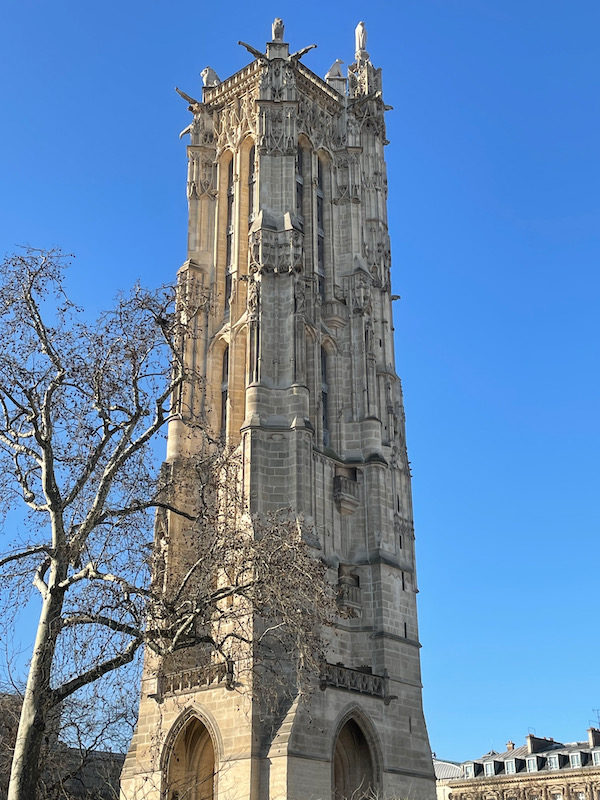

The Église Saint-Merry is dedicated to an 8th century abbot named Saint Mederic. He came to Paris on a pilgrimage and later died there in the year 700. In 884, Mederic was declared patron saint of the Right Bank of Paris. The present church building was begun under King Francois I in about 1520, and finished in about 1560. Though it was built in the middle of the Renaissance, it was built in the Flamboyant or late Gothic style. The front has 3 portals with sculptures from the time of King Louis-Philippe in the first half of the 19th century. The statues in the archway of the door are copies of those in the south transept facade of Notre-Dame-de-Paris.
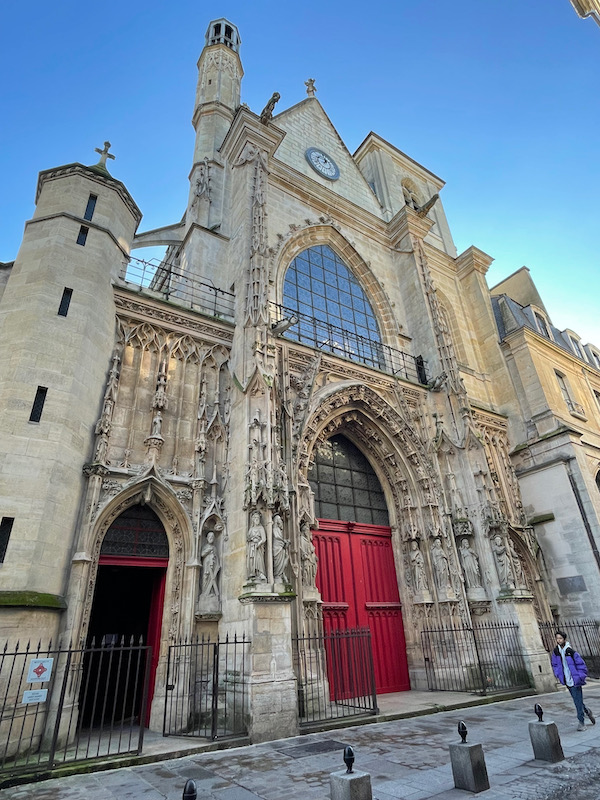

The interior of the church shows Gothic architecture skillfully blended with Renaissance features and decoration. Behind the altar is a gilded Glory from 1753, a sculptural work made of gilded wood and decorated with the sculpted heads of cherubs. The 18th century painting is entitled "The Pilgrims of Emmeaus" by Charles Coypel, which is in the Chapel of the Communion. The stained-glass windows are a collection of 17th century and 19th century windows. The 19th century ones often used panels from the 17th century Renaissance windows that were destroyed during the Revolution.
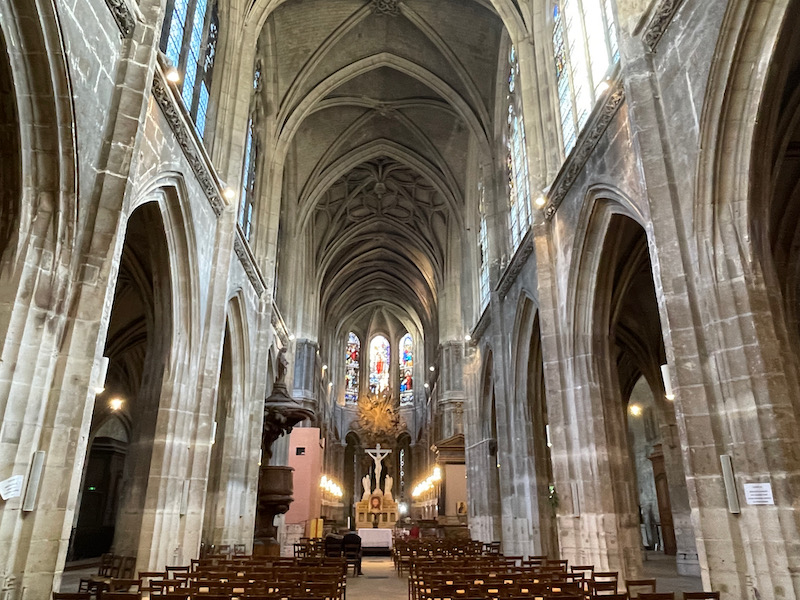
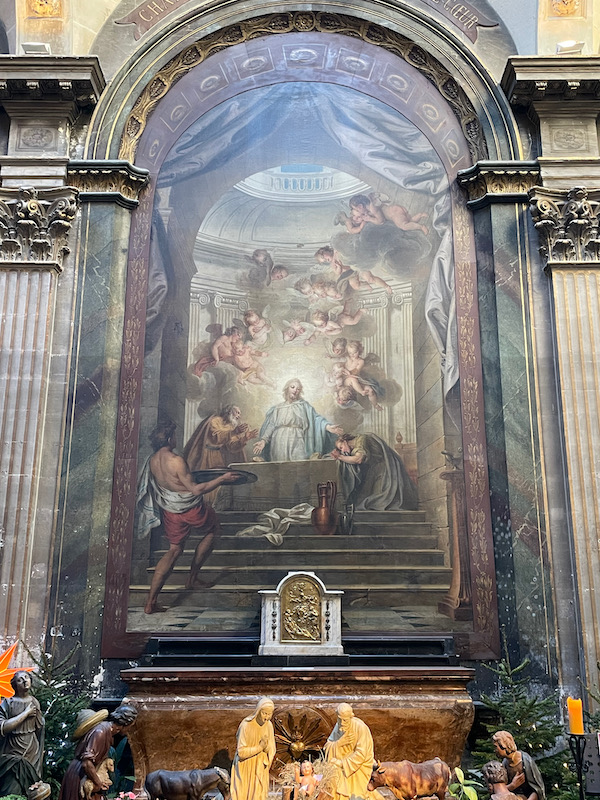
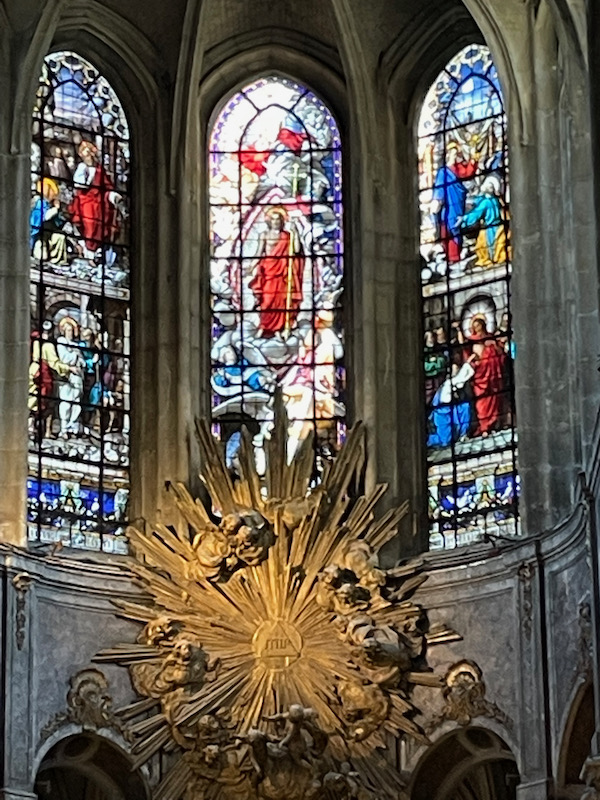
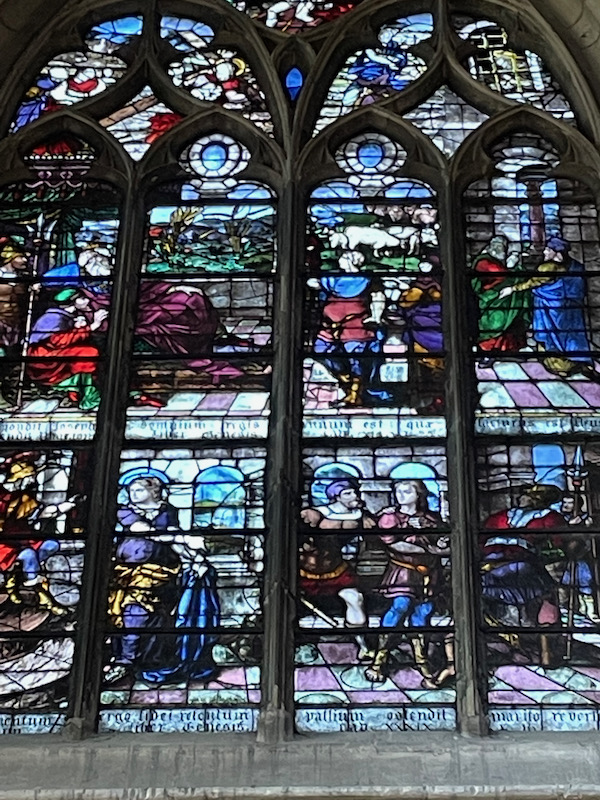
The original pulpit was replaced in 1761 with this more ornate version, supported by sculptured palm trees and the organ was reconstructed in 1781.
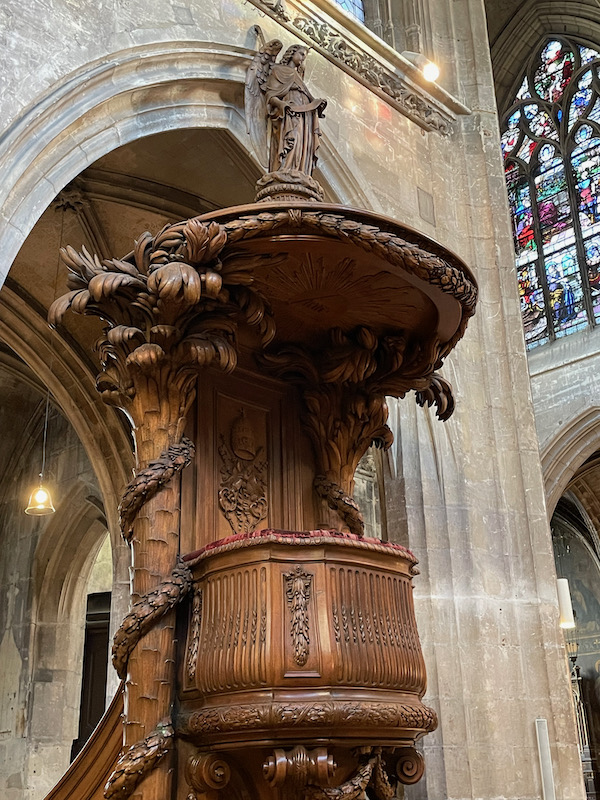

Probably the oldest house in Paris, the Maison de Nicolas Flamel was completed in 1407. It was commissioned by a wealthy member of the Parisian bourgeoisie, Nicolas Flamel, after the death of his wife in 1397. It was built to accommodate the homeless and Flamel never lived there. The door jambs are decorated with sculptures framed in basket-handle arches, which depict characters holding phylacteries or sitting in gardens. The central door is framed by four musician angels. Two door jambs feature Nicolas Flamel's initials. The last picture shows part of an inscription with lettering in "Middle French" (14th to the 16th century).
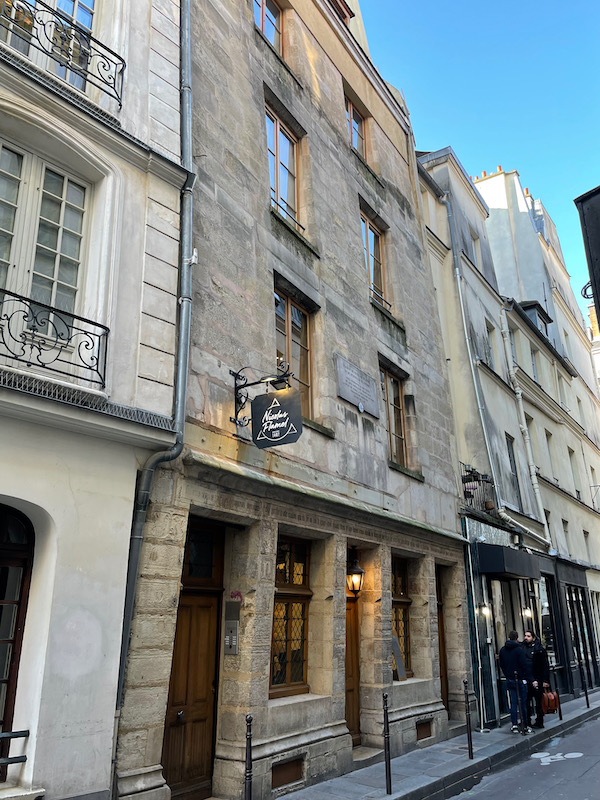

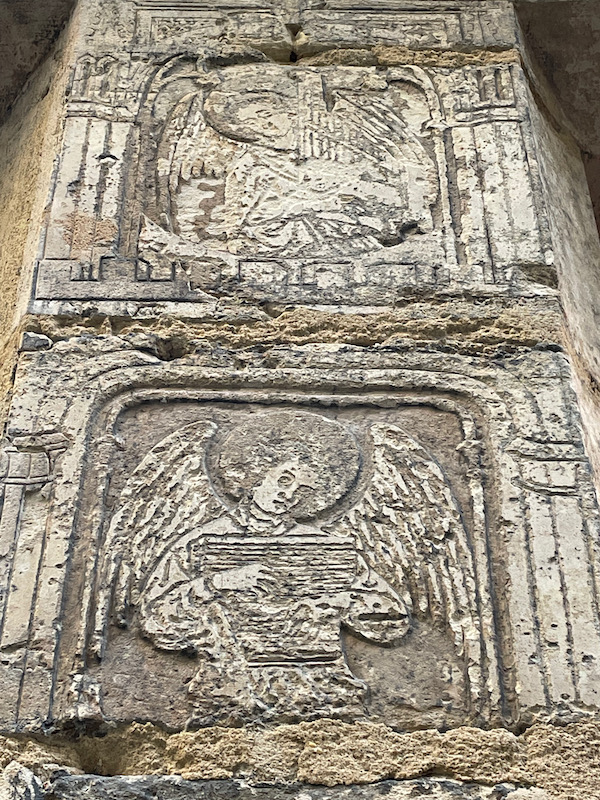

This large building is a former department store called "A Réamur" which was opened in 1897 and closed in 1960. It has a lovely clock with the name on it on the corner.
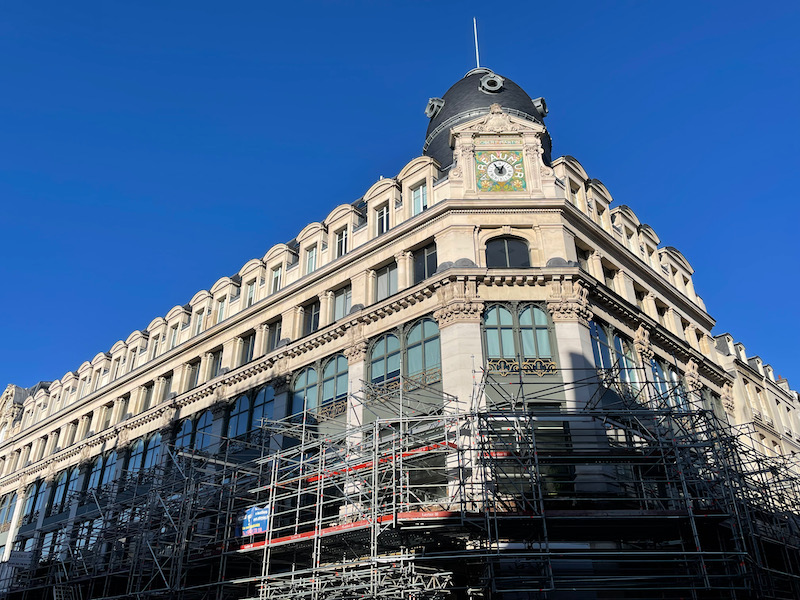
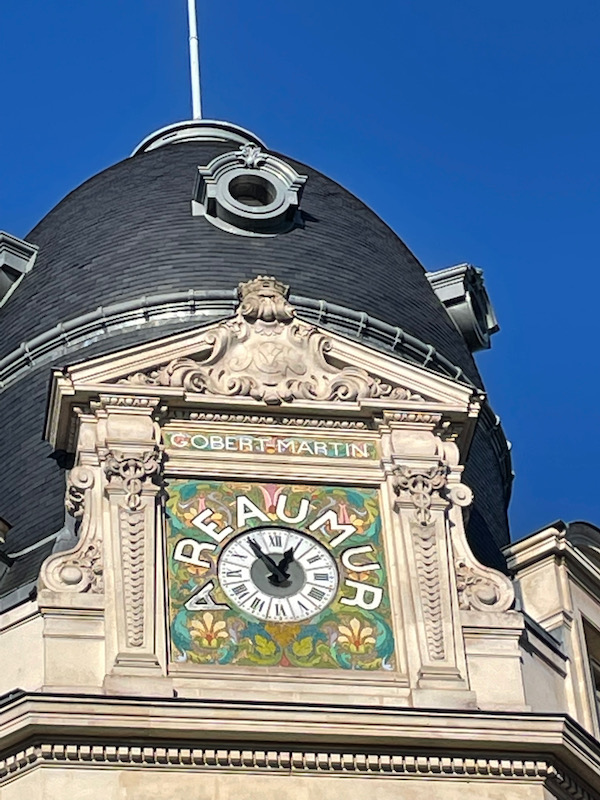
I don't think we ever made it to this square before, the Place des Victoires. It is a circular place surrounded by curved buildings. At the center of the Place is an equestrian monument in honor of King Louis XIV celebrating the Treaties of Nijmegen in 1678-79. You see Louis XIV, dressed as a Roman emperor, sitting on a horse rearing on its hind legs.
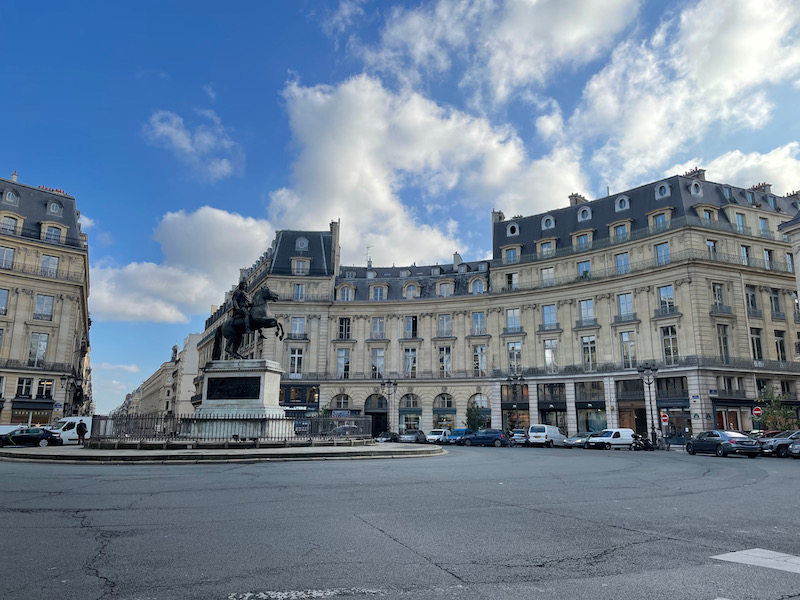
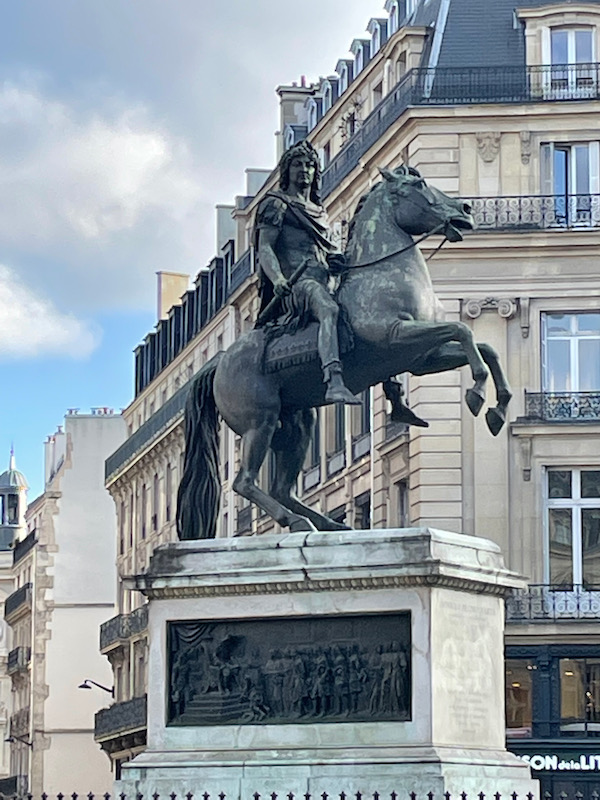
Just around the corner is the Church Notre-Dame-des-Victoires. The foundation cornerstone was laid by King Louis XIII in 1629. Some may wonder why a King would lay the cornerstone for a church (I did!) ... The construction was funded by King Louis on the condition that it be dedicated to his victory over the Protestants at La Rochelle, which he attributed to the intercession of the Blessed Mother.
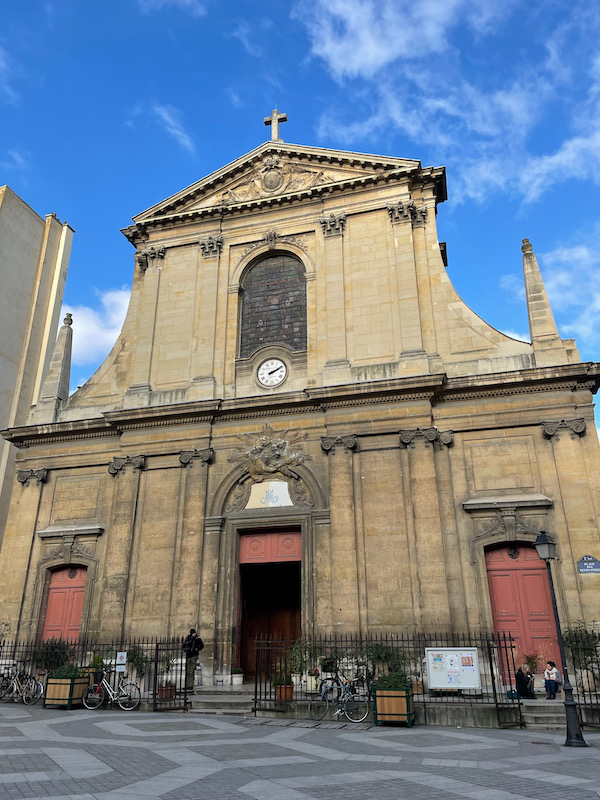
It is actually a relatively short church, but the decorations, especially around the main altar, are quite nice.
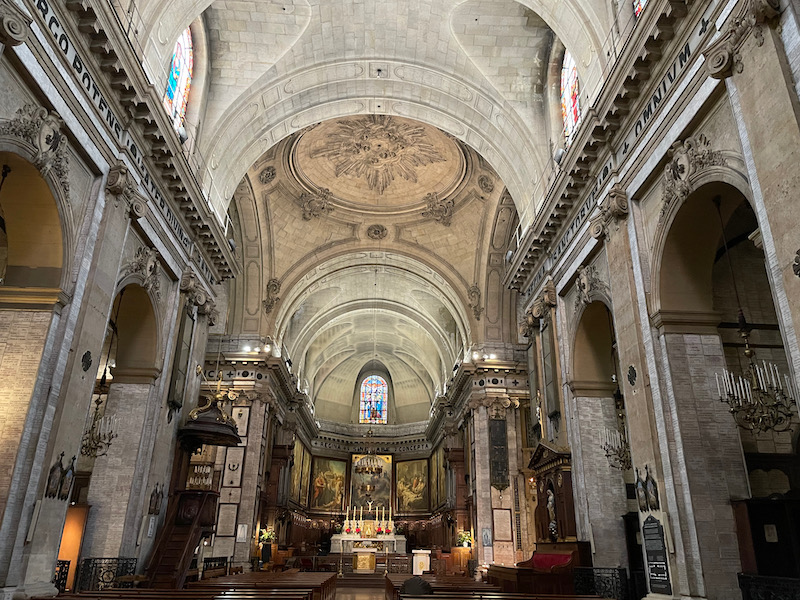

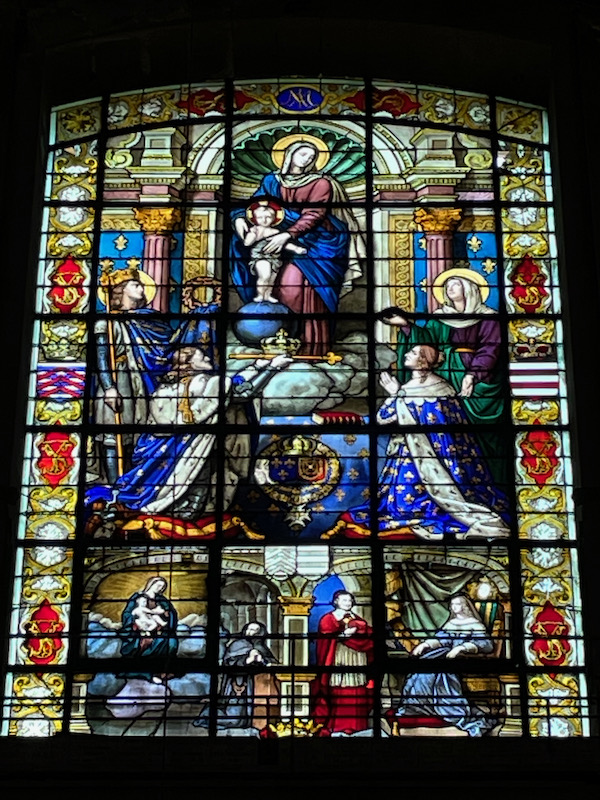


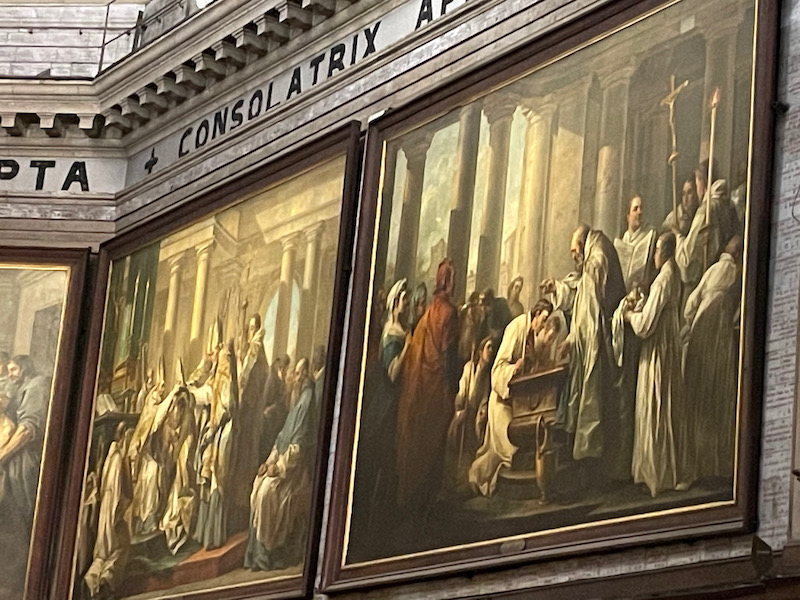

A few more passages, this first one being the Passage Choiseul. Not as unique as some of the other ones, in my opinion.
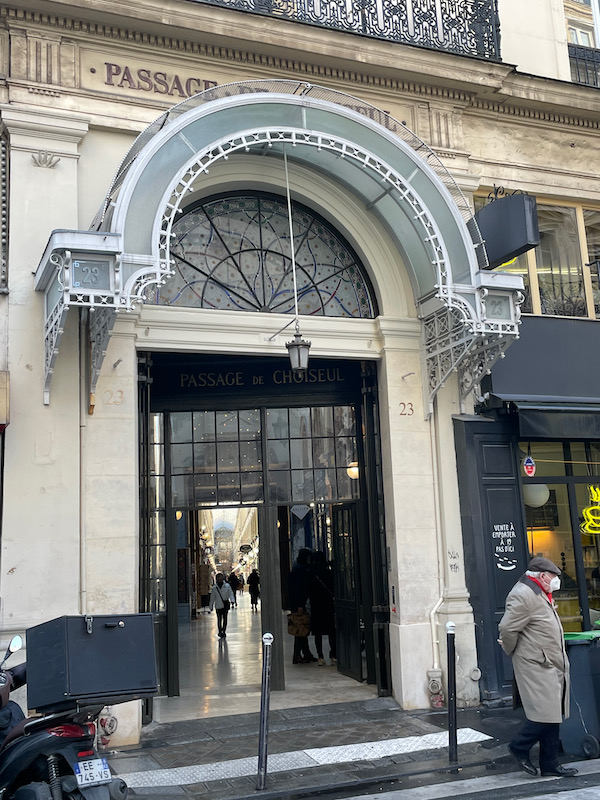
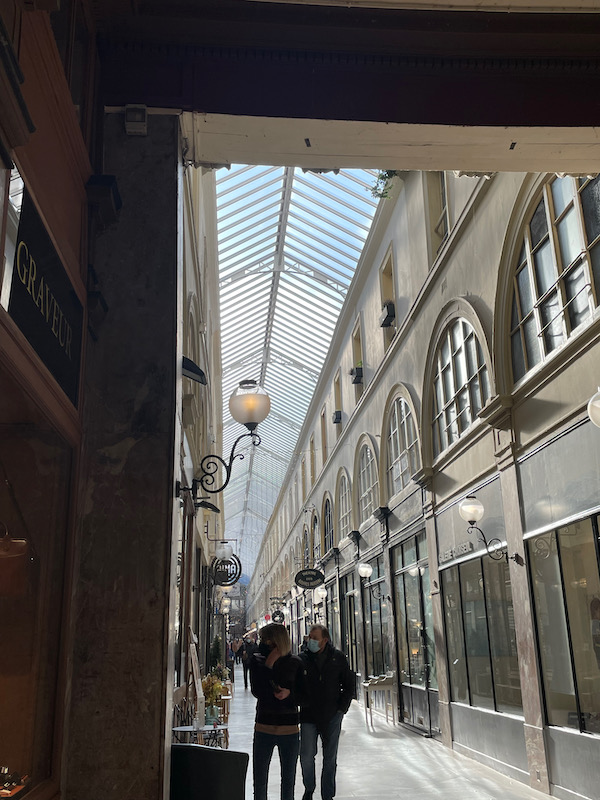
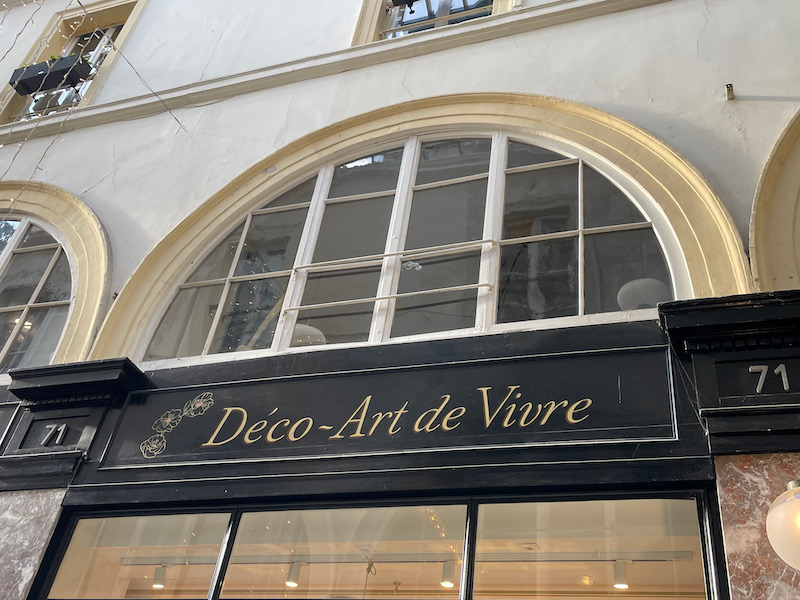
A bit more interesting is the Rotunda of the Colbert gallery. It was completed in 1826, along with the Galerie Vivienne. It was not as successful as the Galerie Vivienne and it now houses offices and research labs.


The Galerie Vivienne is probably the prettiest gallery that we saw. It was designed in a neoclassical Pompeian style decor with really nice mosaic floors.
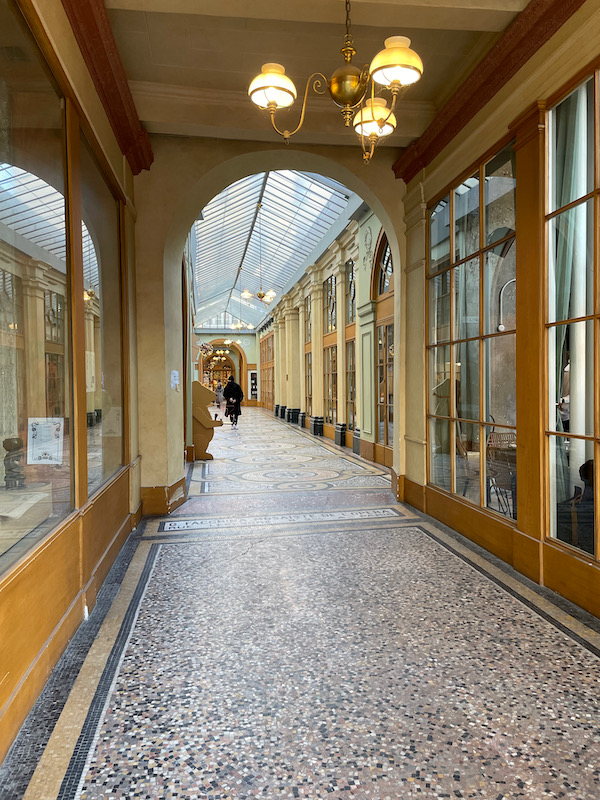

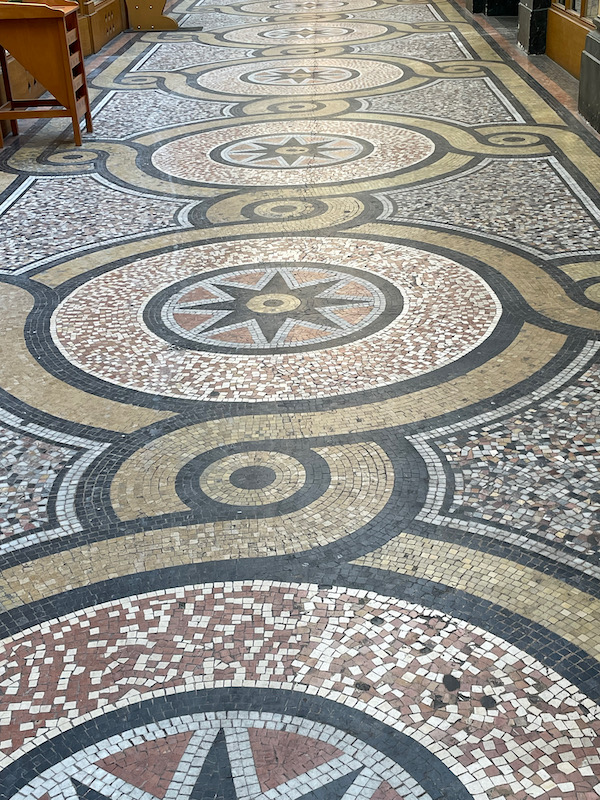
A quick trip through the gardens of the Palais Royale and through the Courtyard of Honor. The black-and-white columns were added in 1986, a work-of-art consisting of short columns of various sizes arranged across the courtyard. The idea is to create two virtual platforms, without floors; the columns vary in height because of differences in height of the illusionary platforms; some of the column rows are purely horizontal, aligned to the height of the column bases of the gallery of Orleans, while the smaller columns all rise to the elevation of a lower non-existent platform; their variation in height is caused by the difference of elevation in parts of the courtyard. Each column has vertical bands of black and white.


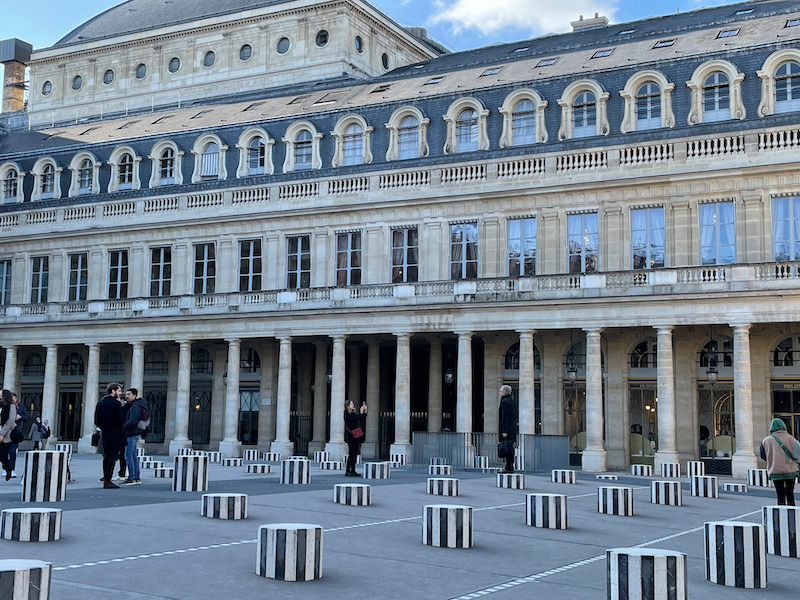
We headed towards the Seine, passing through the buildings and courtyard of the Louvre.
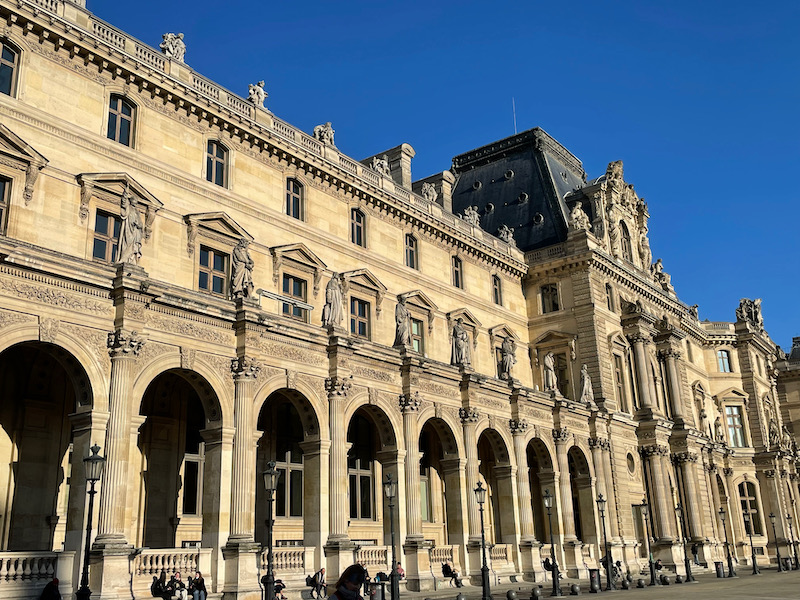
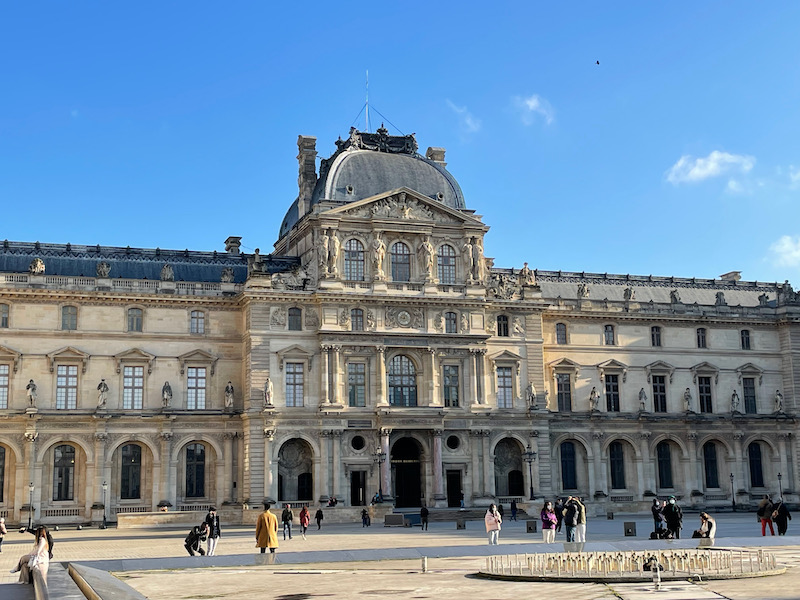
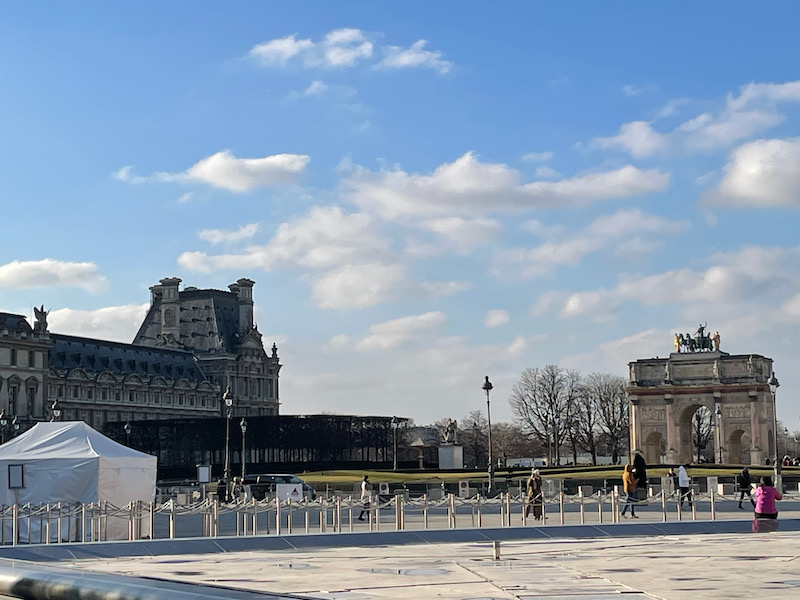
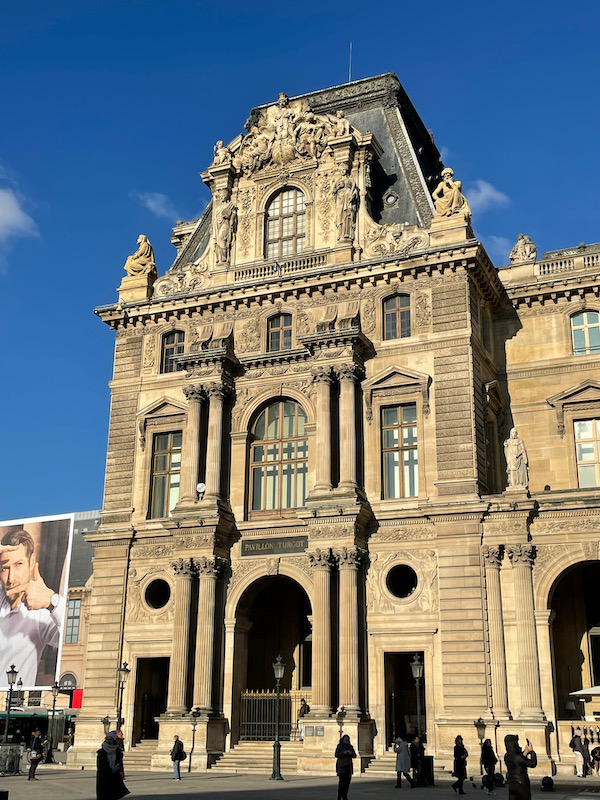

We had wanted to go by the Samaritaine building, which was closed for most of the time that we lived in Paris and has been renovated and reopened. The building is owned by LVMH (the luxury-goods maker that includes Louis Vuitton) and reopened in 2021 with very high-end shopping, restaurants, and a boutique hotel that includes a penthouse suite with its own private swimming pool. The building's exterior has two domes made of glass brick that light up at night. The facade of the building consists of ceramic panels in brightly colored hues of yellow, white, green, and gold. The word "Samaritaine", as well as some of the available merchandise and ware, are displayed around the facade of the building in colorful enamel using an elaborate lettering. The interior features decorative iron staircases, glass tile floors, and frescoes using the repeated floral motif. These elements encompass both ornament and functionality which are core principles of the Art Nouveau movement.


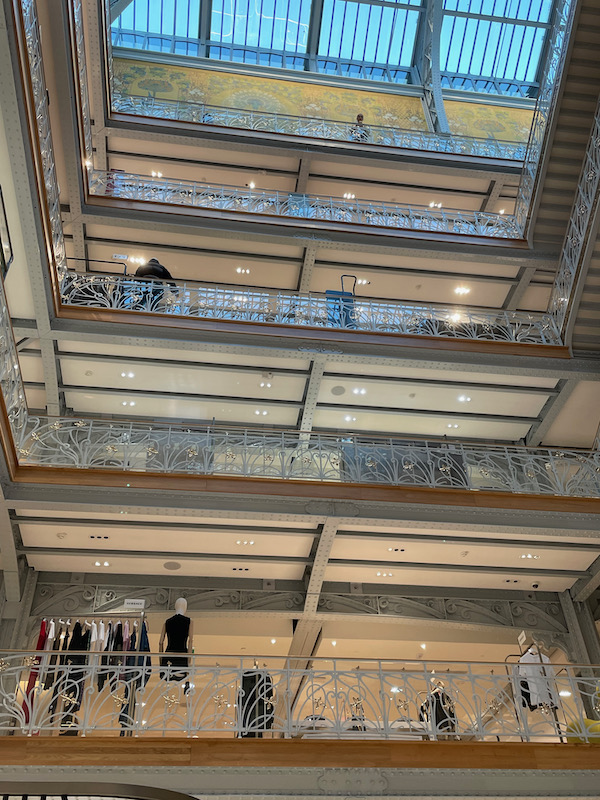
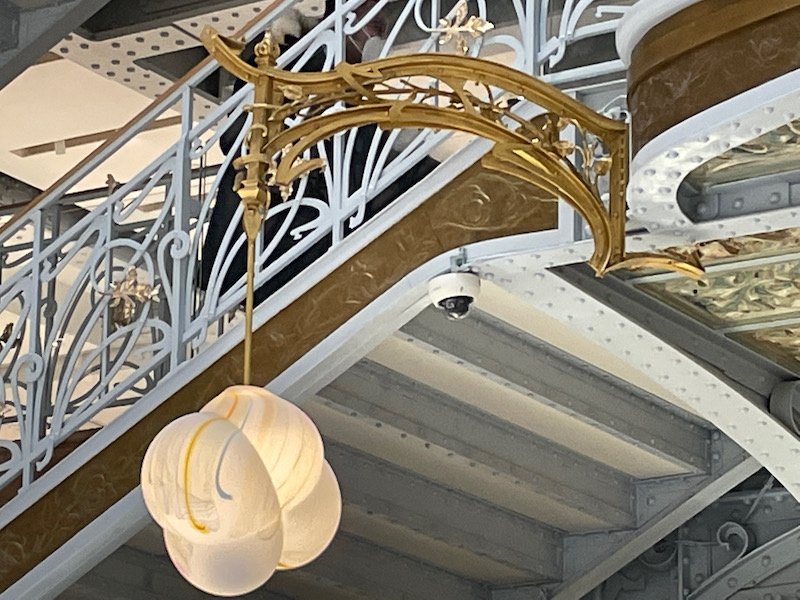
Another church we hadn't seen, the Église Saint-Médard. It was built between the 15th and 18th centuries and is dedicated to Saint Médard of Noyon (456-545) who was the bishop of Noyon. It has a tall nave with ribbed vaults. One odd characteristic (which I didn't get a good picture of) is that the roof over the main alter is actually made of wood, not stone, as it was made during a time that there was a shortage of money. The stained-glass window that I show is from the 19th century.
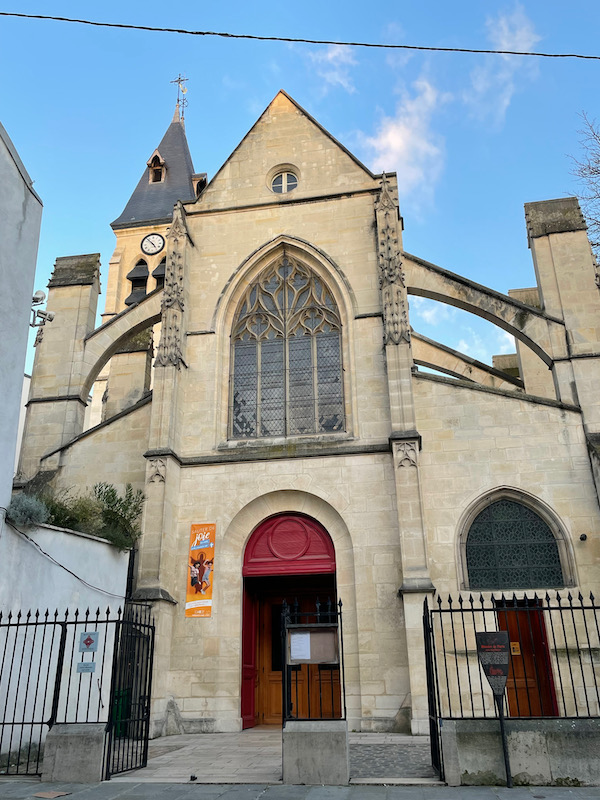

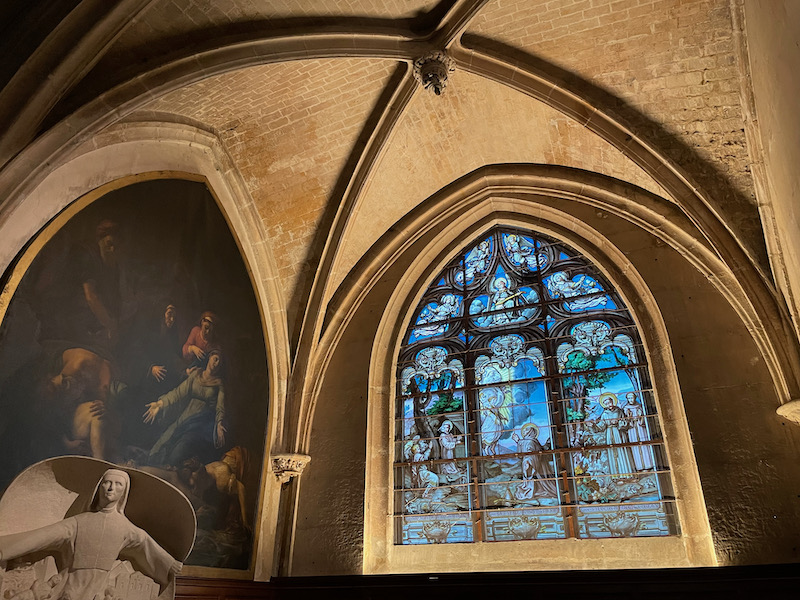

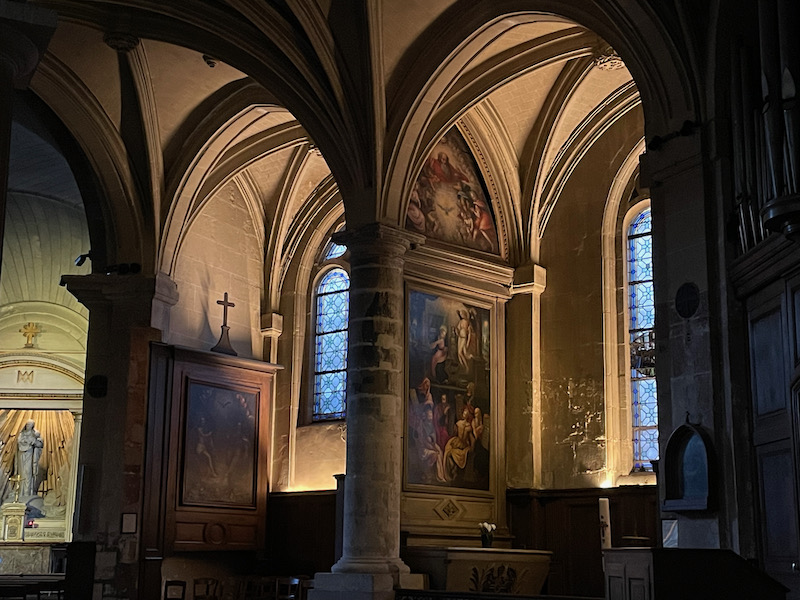

I took pictures of this building, which is right across the street from the church, and then had to go search out information on it. This is called a "Sgraffito" facade. The building dates from the early 17th century but the facade was done between 1929 and 1931. The Italian bricklayer who was hired to decorate the facade of a butcher store used the Sgraffito technique, which is made by scratching through a surface to reveal a lower layer of a contrasting color. Pigs, deer, goats, game and poultry of all kinds, this facade is a real country walk, enriched with volutes, flowers and arabesques typical of Art Nouveau.

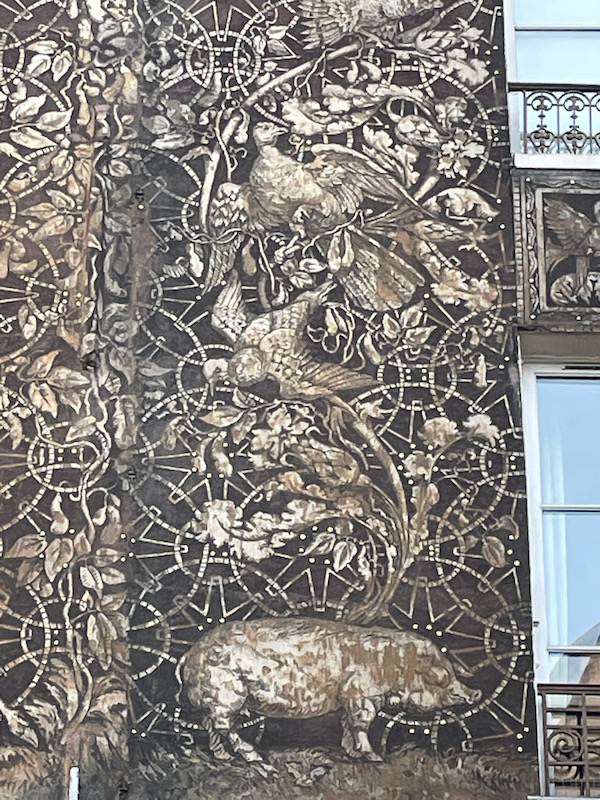
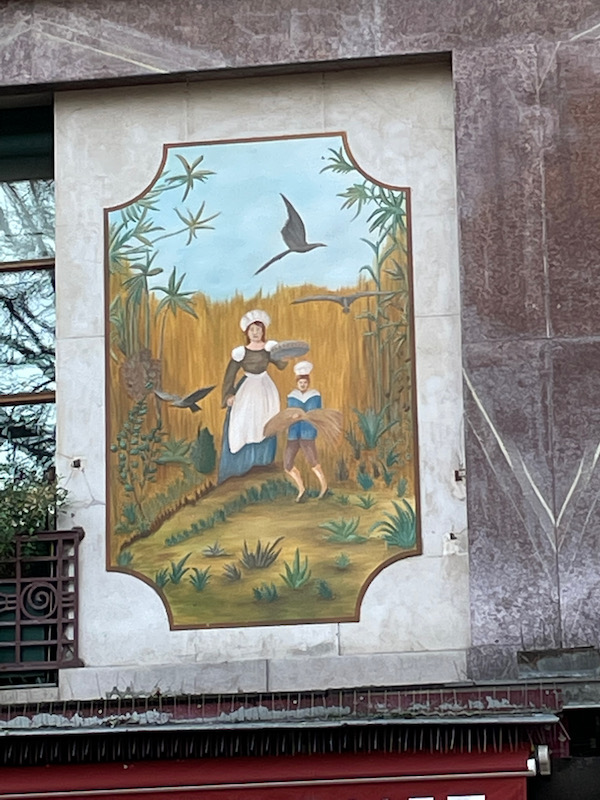
I mentioned a part of the Charles V wall earlier ... here we ran across a little section of the older Philippe Auguste wall. In 1190 as Philippe August was leaving on the 3rd crusade, he ordered the construction of the wall, which was finished around 1210. Tom is there to give an idea of just who big this wall was!
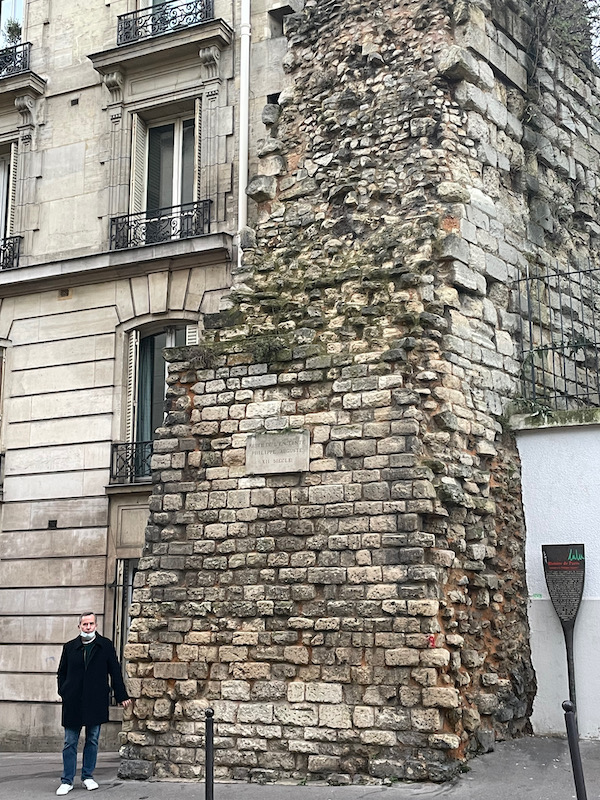
Another dinner at a restaurant with a chef from the Top Chef France competition: this time, Chef Baptiste Trudel at the restaurant Mordu. It is a bit cheaper than the restaurant the night before and there weren't very many clients that night (compared to a packed house the night before). The menu started with an Amuse bouche of a slice of potimarron (a red curdish squash) on a flatbread with Dutch mimolette cheese.
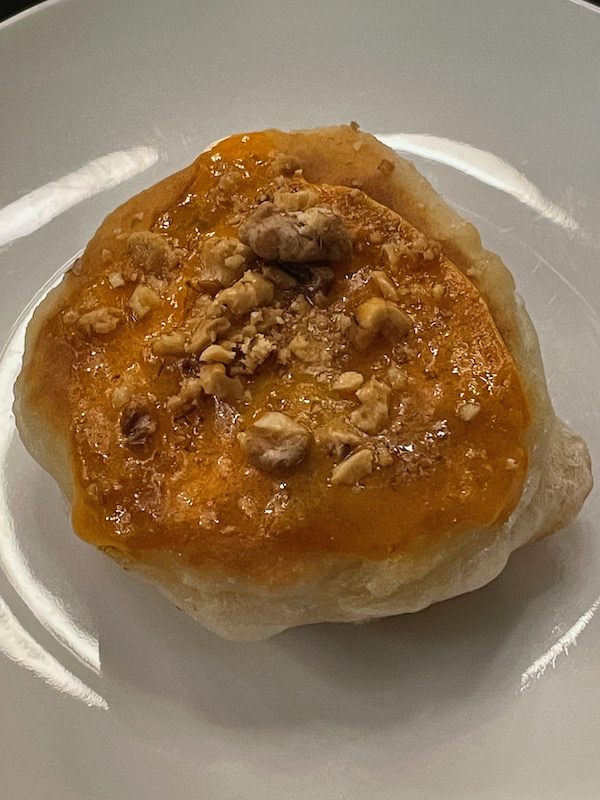
Then the tail if a langoustine with a fennel salad and a langoustine lemongrass broth. Probably my favorite dish of the night.
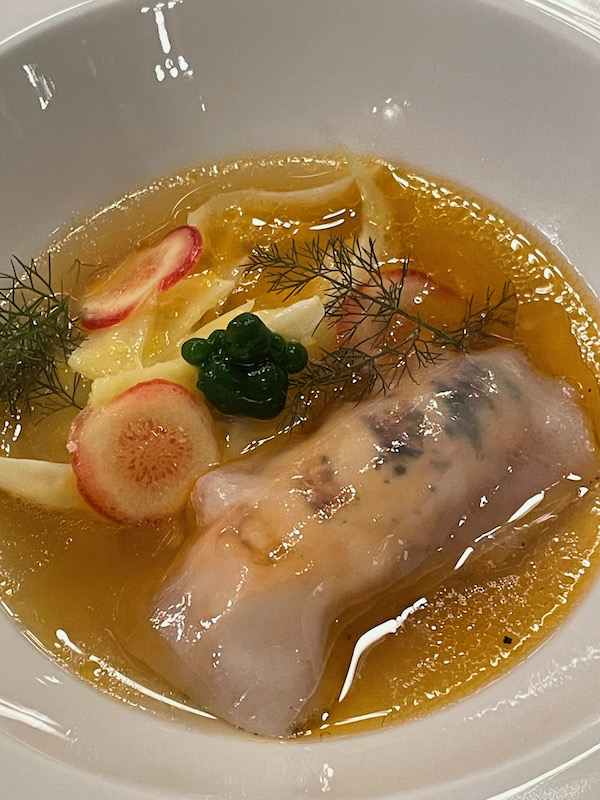
Crabmeat under paper-thin slices of turnip with a mayonnaise of garlic and bergamote

My least favorite dish although Tom really liked this one, a beef tartare topped with pan-fried foie gras, then topped with a crispy tuile. The green on the side is a mint sauce.
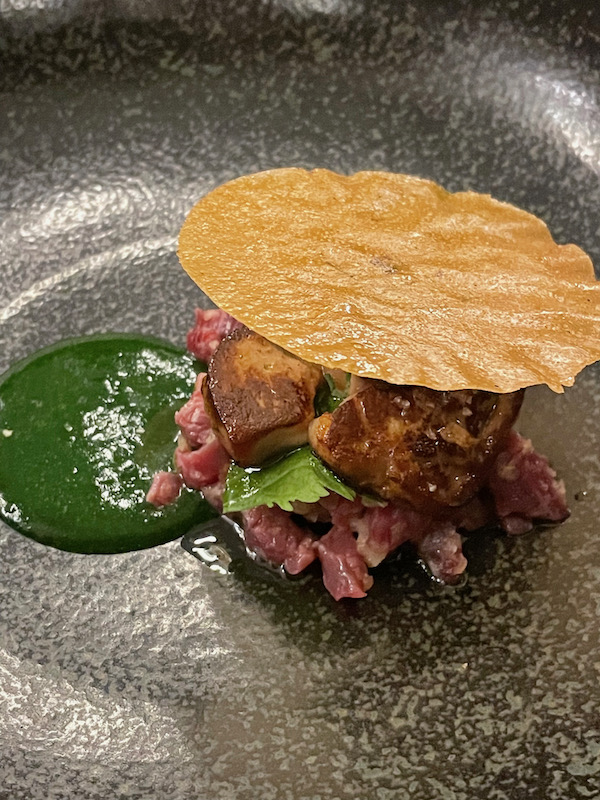
Another fish course, this one roasted lotte fish (otherwise known as a Burbot) with salicorne (the little green bean/asparagus-looking things ... in English they are normally known as either Sea Beans or Sea Asparagus). The salicorne have a distinctive salty-flavor. Then there were two different sauces: a white sauce that was shellfish, leeks, and coconut milk and then drops of a green herb oil.

In French, they say that this is a Pigeon, but definitely not the pigeons that you feed in parks and squares! It is a Squab, which is a baby domesticated/farm-raised pigeon. In Europe, you can see dovecotes on the grounds of many old manor houses where they would be raised for food. Here we have a little Squab leg and breast with a roasted parsnip puree.

The dessert was interesting ... a creamy tapioca dolce-de-lèche topped with a tapioca chip (made to resemble clouds). The black is a sliver of black truffle peeking out from under the chip and ground pepper.
